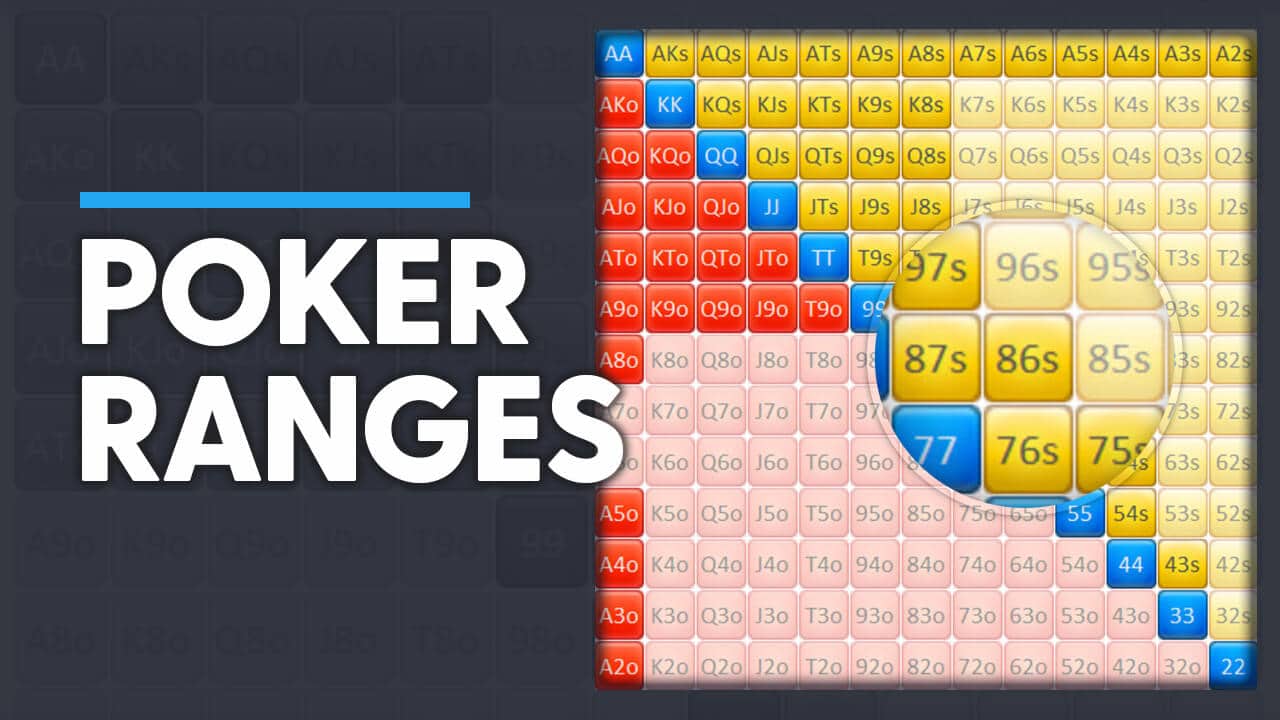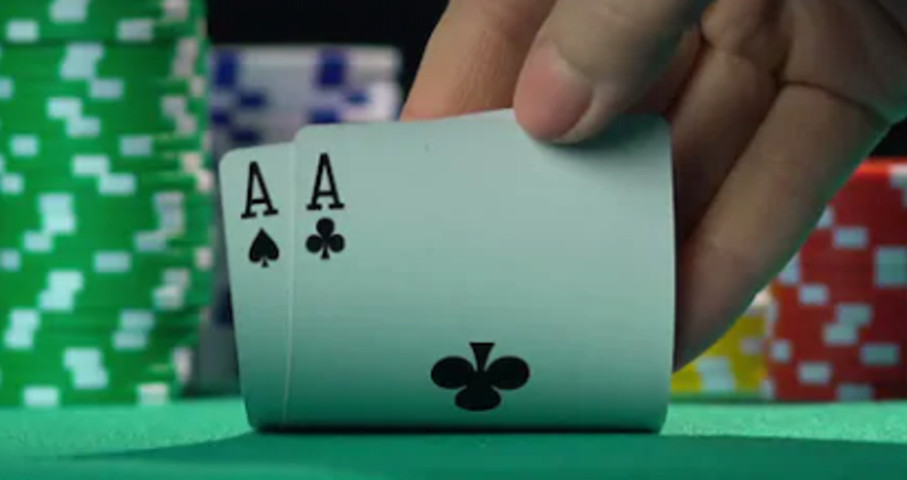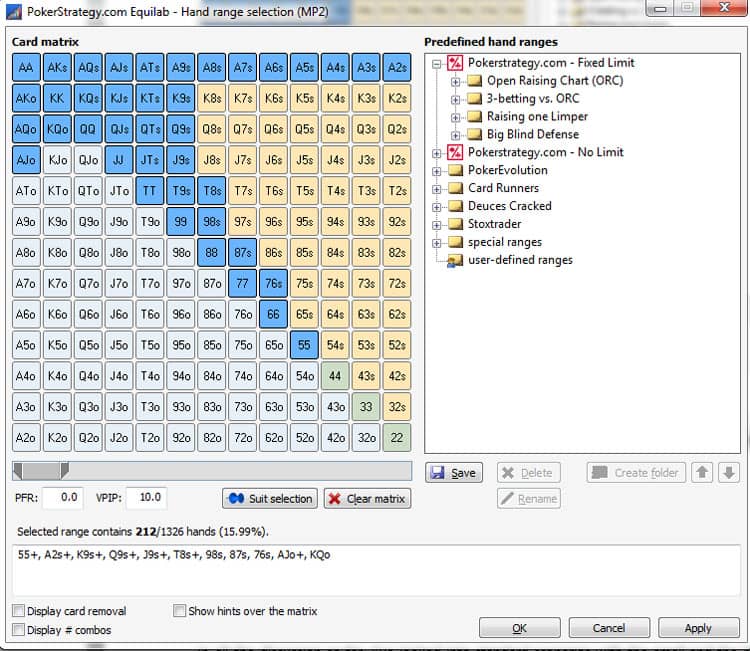Best Position In Poker
- The player sitting immediately to the right of the dealer button is known as Cut off in poker. It is the second-best position in the hand of poker. It is called Cut off because this player has an advantage of bluffing, acting a strong hand or raising the blinds being at the late position.
- And even if you are playing poker online, you will still be assigned a table position even though there is no physical table to be seated at. In this guide, we will talk about how different poker table positions can impact play. If you would like to check out the best places to play Texas Hold’em online, check out this link right here.
Regardless of whether playing tournament poker or grinding it out on the cash tables, understanding the importance of position is an essential concept that every poker player should know. The later we are to act in a hand, the more we know about the other players holdings. The more we know about what the other players hold, the more likely we will be able to make profitable poker decisions. Utilizing relative and absolute position in poker is imperative to the long-term success of a winning poker player. Failing to understand position properly can be the difference between being a winning and losing player as even someone as skilled as Phil Ivey would find it hard to win if he had to play every hand out of position.
Absolute Position In Poker
The flop is dealt and the limper checks because the flop missed him. We put out a continuation bet, causing the player to fold. This is a very simple example of using position to your advantage in poker. Relative Position in Poker. In poker, relative position is expressed as where you sit, in relation to the preflop raiser player. I'm somewhat perplexed on the positions in poker. As I browse, some websites give different/contradicting versions on the description of the positions. For example, some sources say the early positions consists of the small blind, big blind, and UTG (under the gun), while others say it is made up of UTG, UTG+1, and UTG+2 and that the SB. The truth is, most good players play the majority of their hands in position — by a lot, in fact. That's because when it comes to starting poker hand selection, good players tend to fold more hands.
When I speak of absolute position in poker, I am referring to where one is sitting at the poker table, relative to the button or the dealer. In a poker hand, absolute position remains unchanged. If we are on the button, we remain on the button. The blinds are the blinds throughout the hold em hand and so on…
The poker table works in a clockwise manner. The person to the immediate left of the dealer is the first to receive cards while the person to the right of the dealer is the last to receives cards. The two individuals to the immediate left of the dealer are known as the blinds. They are forced to place bets, with the small blind typically placing a half bet, and the big blind placing one big bet on the table. As As they have essentially both made forced bets, they are the last to act in a betting round before the flop comes.
They benefit in a sense, as they get to observe how everyone else views their hand before making their own decision. For weaker players however, this benefit works against them, as they already have money on the table and therefore, often feel compelled to call a raise. This logic is of course flawed. In poker, we prefer to make informed decisions, leaving the guesswork to the rookies. The blinds are the first to act after the flop. They will act before everyone else for the remainder of the hand and will not have the luxury of first seeing everyone else’s actions once the flop comes. Over time, calling too much from the small blind or indeed from the big blind will show a big loss even for the best players in the world.
First To Act In Poker
The earlier position we are at the table, the better our hand should be and the higher our standards must be. With that in mind, when we are under the gun or under the gun+1 (first and second positions respectively), we should be raising a much stronger range of hands, generally pairs and AQ/AK. As we get into later position, we can relax our raising standards, as there are less players left to act behind us, thus the chances of a strong hand being out are much lower.

For example, imagine we are playing .25/.50 no limit Texas Hold em online. We are second to act preflop and are dealt 8-7 of hearts. While I love this hand from later position, when employing a tight aggressive strategy, we should generally fold the hand, as there are too many players left to act behind us. These players have absolute position on us, acting later than we do. They can make it really expensive if we limp into the hand. Additionally, should we choose to raise, we face the chance of being 3bet and if reraised we would have to bin our hand. Because we do not have any information on the strength of several hands at the table, we are best off folding the hand.
Playing From Late Position
When playing from the cutoff or on the button (referred to as late position), we have the luxury of seeing everyone play before us. In a sense, we have been granted the opportunity to watch the game play out from an outsider’s perspective before we are asked to join the game in progress. We are able to process the information before acting. As a result, we make better, more informed and thus more profitable decisions when acting last in a hand. For these reasons and more, playing from the button is the most profitable position in poker.
When playing poker, we want to play far more hands in late position than we do in early position. This gives us the opportunity to act last on every street and also enables us to manipulate the size of the pot as we like. Conversely, playing out of position forces us to act first on every street, often leaving us with tough decisions and not being able to control the size of the pot. Thus, it is alway recommended to play extremely tight when in the blinds and early position. This is because by playing a tighter (stronger) range out of position, we can somewhat counteract our positional disadvantage.
Let’s take the same 8-7 suited that we played from early position at and play it from the button. We can now watch most everyone else act first. We observe two weaker players limping into the pot. These players typically raise with quality hands and often try to limp for cheap flops with their lesser holdings. They are not terribly tricky in their play. We interpret their limping into the pot as weakness. Remember, we have absolute position on them, which is a massive advantage in this poker hand. Putting in a standard raise here is completely fine, as we can isolate the bad players and play the rest of the hand in position. What will happen in the majority of cases is the blinds fold, one of the two limpers call. The flop is dealt and the limper checks because the flop missed him. We put out a continuation bet, causing the player to fold. This is a very simple example of using position to your advantage in poker.
Relative Position in Poker
In poker, relative position is expressed as where you sit, in relation to the preflop raiser player. If the big blind bets out on the flop, when sitting under the gun, I am first to act in relation to the player taking the lead.
Just like with players holding early position from an absolute standpoint, one must proceed with caution when in early position from a relative standpoint. If the cutoff bets out, even though I am on the button I know there are four people left to act. I cannot always call with the confidence I would like. There are four other people who may put in a costly raise behind me yet to act.
To demonstrate this concept, let’s play this hand from the button at a standard $1-$2 no limit table. We have pocket fives. 4 players limp into the pot, and the player acting immediately before us (the player before the button is in the cutoff position) raises to $10. If you remember from a minute ago, we have the best absolute position, because we are on the button. However, the player acting right before us raised. He is the “player with the lead.” We act; then the four players who limped into the pot are left to act – as are the blinds. Because there’s so many players left to act behind us, we are concerned that they might either reraise when we call, or too many of the players may fold, thus not really giving us the most ideal of pot odds or conditions to play (we like playing small pocket pairs in multi-way pots). Because of this uncertainty, we fold.
This concept is known as poor realtive position as although we have position on the raising player, our positional advantage is lost due to the fact that there are so many players left to act after us.
Relative Position When Playing From Late Position
If the raiser is to my immediate left, I hold the most favorable position, relative to the acting player. As a result, I can benefit from everyone else acting before me, and thus I am able to make the most informed decision of all. Let’s replay the same hand from a $1-2 NL game. This time, imagine the small blind raises preflop.
We have pocket fives on the button, 3 players limp into the pot, as does the cutoff player. We also limp, in hopes of seeing a cheap flop. The small blind raises to $10. 4 players call the small blinds preflop raise. It is our turn to act. The price, in relation to the pot is right, so we decide we can play. In this instance, we will obviously call and take the cheap flop as playing a small pair in position in a multiway single raised pot is exactly what you want with small pairs. We also have the have the luxury of both relative and absolute position in this hand getting to see everyone else’s action before we decide what to do.
Using Relative Position to your Advantage
Often, one can use relative position to their advantage. If there is a player who likes to take the lead when he is checked to, it makes sense to check to him so that he will bet and you can act accordingly (raise, fold, or call). At an aggressive table, the check is useful in gaining relative position. By checking, you are coaxing the later acting aggressor to take the lead presenting you with the opportunity to check raise or check call depending on the situation.
Using Absolute and Relative Position
Over time, properly embracing the concept of relative position can ice a live table, as players acting later than you (absolutely speaking) will begin fearing a check raise. As a result, they are playing scared and forfeiting their advantage of late position play. In turn, this allows you to come in with weaker hands than you would normally play. Additionally, you will establish control of the table when you use relative position to your advantage.
Putting It All Together
When holding absolute position, play aggressively. This is the position at the table at which every poker player makes the most money, so we should be calling and raising with a much higher frequency when playing in later positions. Call with more suited connectors, 3bet lighter and steal the blinds more often. Learning to use position correctly is a crucial skill. if you can master the art of position, there’s no doubt you will be well on your way to becoming a successful player!
A good poker player knows that position is a crucial factor in the game and plays a vital part in the success of a player.
:max_bytes(150000):strip_icc()/Poker-58a5eafb5f9b58a3c9f205cb.jpg)
The term “playing in position” means that a player who is in this situation is the last one to make their move after they have seen what everybody else has done.

But why is it so important to play in Position?
Why is it Best to Play in Position?
If you’re playing in position, you have the maximum amount of information available to any player. You have the edge because you get an idea of what is happening with your fellow players before it is your turn to play, and you have to decide what you are going to do with your hand.
Someone who is not playing in position is groping in the dark, trying to guess the value of his opponents’ hands without getting any information from them first.
This article is not designed to teach you the various different positions in poker, if you want a refresher then take a look at the Poker Position lesson in the How to Win at Poker Course in the University.
Advantage: Playing In Position
Playing in Position is the phrase used when you are playing in Late Position. This means that you are on the dealer button, or the few seats to the right of it.
Because the play always starts from the seat to the left of the dealer button, this means that it goes around the whole table before it reaches you, and all your opponents have had to reveal some information about their hand before you have to make any decisions.
Poker can seems delightfully easy when you’re playing in position. When you’re joining a table, spend some time observing the table and try your best to get the seat to the left of the weak players at the table. This way, you’ll get the most possible time being in position and can wield that positional power against the weaker players who don’t have the know how to recognize what you are doing or defend against it.
Because of the power and usefulness that playing in position carries, it is sometimes referred to as the “Jesus Seat”. You can walk on water or perform any miracle when you’re playing in position, with your enviable control over other players, and thus the game. Your rivals are forced into a defensive position and have to play what is called “scared poker”, ever apprehensive about the outcome of the hand.
Disadvantage: Playing Out of Position
Anybody playing in Middle Position or Early Position (the blinds and first few seats to their left) is said to be playing “Out of Position”.
Playing Position In Poker
It’s no coincidence that a person whose turn comes straight after the cards have finished being dealt is said to be playing “under the gun”. This expression, however alarmingly is it, describes the situation well as it is the position that is most perilous and often proves to be very expensive for players who play hands regularly in this position.


Under the gun, you are the first to act before the flop and among the first to act after the flop, so you lose the opportunity to gather information from your opponents actions before you have to act – this opportunity is in the hands of the person who is playing in position. So you will usually find the players in position controlling and defining the way a hand is played.
If you are in an early position, you would be well advised to play very tight. Since you are not in position, you are at a disadvantage, so counteract that by reducing the time you spend playing out of position. This makes later decisions simpler to make.
There is a simple strategy to apply when considering playing out of position. Only play really good hands. You should have cards comprising aces, kings and pairs. Secondly, if you have pocket aces, pocket kings or pocket queens or ace king, raise at a tight table, and limp in at a loose table.
You can try placing “feeler” bets in an early position to check out your opponent’s reaction to it, and gain some information on them. But in general out of position make sure that your game is extremely tight and play your hands carefully to make the best of playing out of position.
Again this Bitesize Strategy article is not designed to go into depth on how to play in certain positions and this is given the time it deserves and covered in much more detail in the How to Win at Poker Course in the University.
Position: the road to a more healthy Bankroll
Best Position In Poker
The message from this article is simple. There are huge advantages to playing whilst in position, so you have the choice, do you want to play more hands where you have an advantage, or stick to playing at a disadvantage.
Texas Holdem Position Chart
I know which one I choose, and my poker bankroll thanks me for it!